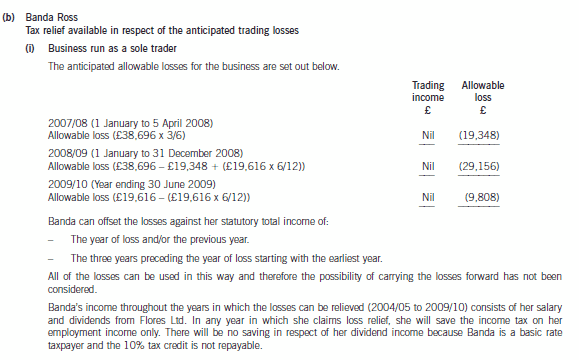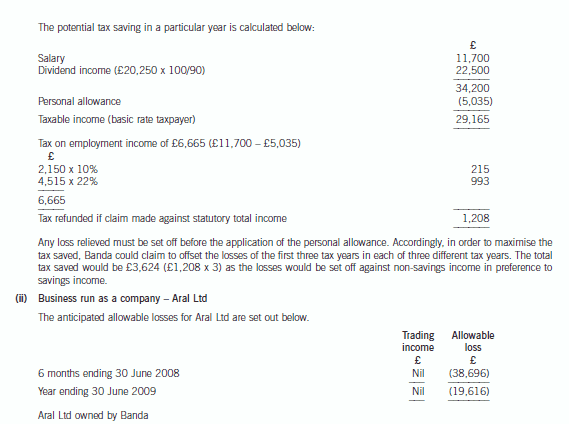更适合考ACCA的人有哪些呢?快来看看吧!
发布时间:2020-02-21
ACCA证书并不是每一位财经人士都可以选择的财会证书,针对部分人群也有不同的证书。那么,ACCA比较适合哪类人报考呢?今天,51题库考试学习网带领大家一起来了解一下。
1、 已经是企业财务管理者,或者未来计划成为财务管理者的人
“不想当将军的士兵不是好士兵”,这话老了点,但道理并不过时。从基层工作者一路打拼成为高管,这样的人的确值得尊重,但是如果有更快的办法实现目标,为什么不呢? ACCA证书就是一张可以帮助你迅速成长的证书,通过系统的学习,获得和会计学位相当水平的知识,对行业有更为深刻的把控,了解一项业务是如何运转的,同时培养自己的人际关系。如果你想成为财务管理者,那么你就需要更全面的财务管理知识,而ACCA正是能够给你提供一个这样的平台和机会。
2、 计划入职跨国企业或者外企的工作者
经济全球化的驱使下,了解甚至是掌握中国及国际各大财务准则熟练各大财务报表的国际性人才将会更受欢迎。其次,英语是国际商务领域中普遍应用的语言,外企总是首先希望招聘到有较高英语写作与会话能力的人才,而ACCA全英文的考试环境也变相地提升了我们的英语能力。
3、 毕业前就想拥有大量财务工作经验的在校大学生
虽然ACCA是一张高大上的证书,但是,ACCA也是为数不多的可以在大学期间就能报考的财经证书。考完ACCA一般需要两年的时间,而学习时间较为充足的大学期间就是报考ACCA的绝佳时间。不要担心考完ACCA证书在你毕业就业时毫无作用,在我们报考ACCA的过程中,我们可以获得高级商业会计证书,还能申请牛津布鲁克斯大学等各大海外高校的学士和硕士学位,都能够为我们将来的就业提供竞争优势。
4、 励志要走进四大,或会计师事务所的人
会计师事务所在全球最为著名的就是普华永道、德勤、毕马威、和安永,高薪的岗位和发展前景也让它成了很多财会人的就业首选。一般来说,ACCA会员在四大工作五年左右的经验就可以升为经理。从长远来讲,ACCA适合有毅力并在外企、四大会计师事务所寻求职业发展的会计人。
好了,以上就是关于哪些人适合报考ACCA的内容介绍。如果还想了解更多信息,欢迎来51题库考试学习网留言哦!
下面小编为大家准备了 ACCA考试 的相关考题,供大家学习参考。
(c) Explain the benefits of performance-related pay in rewarding directors and critically evaluate the implications
of the package offered to Choo Wang. (8 marks)
(c) Choo Wang’s remuneration package
Benefits of PRP
In general terms, performance-related pay serves to align directors’ and shareholders’ interests in that the performancerelated
element can be made to reflect those things held to be important to shareholders (such as financial targets). This, in
turn, serves to motivate directors, especially if they are directly responsible for a cost or revenue/profit budget or centre. The
possibility of additional income serves to motivate directors towards higher performance and this, in turn, can assist in
recruitment and retention. Finally, performance-related pay can increase the board’s control over strategic planning and
implementation by aligning rewards against strategic objectives.
Critical evaluation of Choo Wang’s package
Choo Wang’s package appears to have a number of advantages and shortcomings. It was strategically correct to include some
element of pay linked specifically to Southland success. This will increase Choo’s motivation to make it successful and indeed,
he has said as much – he appears to be highly motivated and aware that additional income rests upon its success. Against
these advantages, it appears that the performance-related component does not take account of, or discount in any way for,
the risk of the Southland investment. The bonus does not become payable on a sliding scale but only on a single payout basis
when the factory reaches an ‘ambitious’ level of output. Accordingly, Choo has more incentive to be accepting of risk with
decisions on the Southland investment than risk averse. This may be what was planned, but such a bias should be pointed
out. Clearly, the company should accept some risk but recklessness should be discouraged. In conclusion, Choo’s PRP
package could have been better designed, especially if the Southland investment is seen as strategically risky.
3 You are the manager responsible for the audit of Albreda Co, a limited liability company, and its subsidiaries. The
group mainly operates a chain of national restaurants and provides vending and other catering services to corporate
clients. All restaurants offer ‘eat-in’, ‘take-away’ and ‘home delivery’ services. The draft consolidated financial
statements for the year ended 30 September 2005 show revenue of $42·2 million (2004 – $41·8 million), profit
before taxation of $1·8 million (2004 – $2·2 million) and total assets of $30·7 million (2004 – $23·4 million).
The following issues arising during the final audit have been noted on a schedule of points for your attention:
(a) In September 2005 the management board announced plans to cease offering ‘home delivery’ services from the
end of the month. These sales amounted to $0·6 million for the year to 30 September 2005 (2004 – $0·8
million). A provision of $0·2 million has been made as at 30 September 2005 for the compensation of redundant
employees (mainly drivers). Delivery vehicles have been classified as non-current assets held for sale as at 30
September 2005 and measured at fair value less costs to sell, $0·8 million (carrying amount,
$0·5 million). (8 marks)
Required:
For each of the above issues:
(i) comment on the matters that you should consider; and
(ii) state the audit evidence that you should expect to find,
in undertaking your review of the audit working papers and financial statements of Albreda Co for the year ended
30 September 2005.
NOTE: The mark allocation is shown against each of the three issues.
3 ALBREDA CO
(a) Cessation of ‘home delivery’ service
(i) Matters
■ $0·6 million represents 1·4% of reported revenue (prior year 1·9%) and is therefore material.
Tutorial note: However, it is clearly not of such significance that it should raise any doubts whatsoever regarding
the going concern assumption. (On the contrary, as revenue from this service has declined since last year.)
■ The home delivery service is not a component of Albreda and its cessation does not classify as a discontinued
operation (IFRS 5 ‘Non-current Assets Held for Sale and Discontinued Operations’).
? It is not a cash-generating unit because home delivery revenues are not independent of other revenues
generated by the restaurant kitchens.
? 1·4% of revenue is not a ‘major line of business’.
? Home delivery does not cover a separate geographical area (but many areas around the numerous
restaurants).
■ The redundancy provision of $0·2 million represents 11·1% of profit before tax (10% before allowing for the
provision) and is therefore material. However, it represents only 0·6% of total assets and is therefore immaterial
to the balance sheet.
■ As the provision is a liability it should have been tested primarily for understatement (completeness).
■ The delivery vehicles should be classified as held for sale if their carrying amount will be recovered principally
through a sale transaction rather than through continuing use. For this to be the case the following IFRS 5 criteria
must be met:
? the vehicles must be available for immediate sale in their present condition; and
? their sale must be highly probable.
Tutorial note: Highly probable = management commitment to a plan + initiation of plan to locate buyer(s) +
active marketing + completion expected in a year.
■ However, even if the classification as held for sale is appropriate the measurement basis is incorrect.
■ Non-current assets classified as held for sale should be carried at the lower of carrying amount and fair value less
costs to sell.
■ It is incorrect that the vehicles are being measured at fair value less costs to sell which is $0·3 million in excess
of the carrying amount. This amounts to a revaluation. Wherever the credit entry is (equity or income statement)
it should be reversed. $0·3 million represents just less than 1% of assets (16·7% of profit if the credit is to the
income statement).
■ Comparison of fair value less costs to sell against carrying amount should have been made on an item by item
basis (and not on their totals).
(ii) Audit evidence
■ Copy of board minute documenting management’s decision to cease home deliveries (and any press
releases/internal memoranda to staff).
■ An analysis of revenue (e.g. extracted from management accounts) showing the amount attributed to home delivery
sales.
■ Redundancy terms for drivers as set out in their contracts of employment.
■ A ‘proof in total’ for the reasonableness/completeness of the redundancy provision (e.g. number of drivers × sum
of years employed × payment per year of service).
■ A schedule of depreciated cost of delivery vehicles extracted from the non-current asset register.
■ Checking of fair values on a sample basis to second hand market prices (as published/advertised in used vehicle
guides).
■ After-date net sale proceeds from sale of vehicles and comparison of proceeds against estimated fair values.
■ Physical inspection of condition of unsold vehicles.
■ Separate disclosure of the held for sale assets on the face of the balance sheet or in the notes.
■ Assets classified as held for sale (and other disposals) shown in the reconciliation of carrying amount at the
beginning and end of the period.
■ Additional descriptions in the notes of:
? the non-current assets; and
? the facts and circumstances leading to the sale/disposal (i.e. cessation of home delivery service).
(b) The tax relief available in respect of the anticipated trading losses, together with supporting calculations and
a recommended structure for the business. (16 marks)


Aral Ltd owned by Banda
The losses would have to be carried forward and deducted from the trading profits of the year ending 30 June 2010.
Aral Ltd cannot offset the loss in the current period or carry it back as it has no other income or gains.
Aral Ltd owned by Flores Ltd
The two companies will form. a group relief group if Flores Ltd owns at least 75% of the ordinary share capital of Aral
Ltd. The trading losses could be surrendered to Flores Ltd in the year ending 30 June 2008 and the year ending
30 June 2009. The total tax saved would be £11,079 ((£38,696 + £19,616) x 19%)
Recommended structure
The Aral business should be established in a company owned by Flores Ltd.
This will maximise the relief available in respect of the trading losses and enable relief to be obtained in the period in
which the losses are incurred.
Tutorial note
The whole of the loss for the period ending 30 June 2008 can be surrendered to Flores Ltd as it is less than that
company’s profit for the corresponding period, i.e. £60,000 (£120,000 x 6/12).
(ii) State the taxation implications of both equity and loan finance from the point of view of a company.
(3 marks)
(ii) A company needs to be aware of the following issues:
Equity
(1) Costs incurred in issuing share capital are not allowed as a trading deduction.
(2) Distributions to investors are not allowed as a trading deduction.
(3) The cost of making distributions to shareholders are disallowable.
(4) Where profits are taxed at an effective rate of less than 19%, any profits used to make a distribution to noncorporate
shareholders will themselves be taxed at the full 19% rate.
Loan finance/debt
(1) The incidental costs of obtaining/raising loan finance are broadly deductible as a trading expense.
(2) Capital costs of raising loan finance (for example, loans issued at a discount) are not deductible for tax purposes.
(3) Interest incurred on a loan to finance a business is deductible from trading income.
声明:本文内容由互联网用户自发贡献自行上传,本网站不拥有所有权,未作人工编辑处理,也不承担相关法律责任。如果您发现有涉嫌版权的内容,欢迎发送邮件至:contact@51tk.com 进行举报,并提供相关证据,工作人员会在5个工作日内联系你,一经查实,本站将立刻删除涉嫌侵权内容。
- 2020-02-27
- 2021-03-28
- 2020-01-09
- 2020-01-09
- 2021-01-13
- 2020-07-04
- 2021-04-04
- 2020-08-15
- 2020-02-27
- 2020-01-10
- 2020-01-10
- 2020-01-09
- 2020-02-27
- 2020-01-10
- 2020-01-09
- 2020-02-23
- 2020-01-09
- 2020-09-03
- 2020-09-03
- 2020-01-09
- 2020-01-08
- 2020-02-01
- 2020-07-04
- 2020-01-10
- 2020-01-09
- 2020-01-10
- 2020-01-09
- 2020-01-10
- 2020-09-03
- 2021-06-03